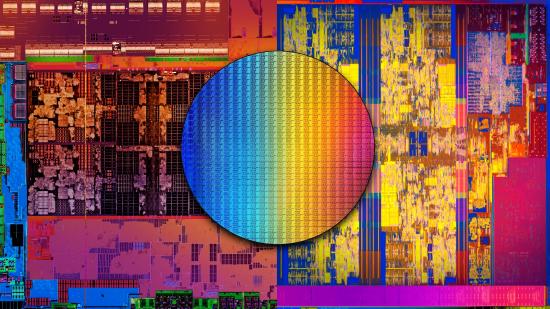As is always the way of things, 2018 kicks off with the great and the good, and the downright terrible, of the tech world descending on Las Vegas for the Consumer Electronics Show. There’s going to be a whole lot of CPU, GPU, laptop-like, monitor-y, peripheralised type stuff going down in Vegas, so it’s good to be prepared.
If you want to know what the best kit is right now check out our regularly updated hardware guides.
The last twelve months might well have seen a whole lot of new kit arrive, particularly with AMD seemingly having released new hardware every time I booted up my PC in the morning. But 2018 is going to be necessarily more interesting, because everything that happened is 2017 now needs to be topped.
Whether that’s the red team negotiatubg the difficult second album that is the second-gen AMD Ryzen refresh, or Intel striking back against the CPU upstarts, it’s all being ratcheted up that extra notch.
And that seems like as good a place as any to start, so…
2018 CPUs
AMD’s 12nm Ryzen 2 and the flight of the Ravens
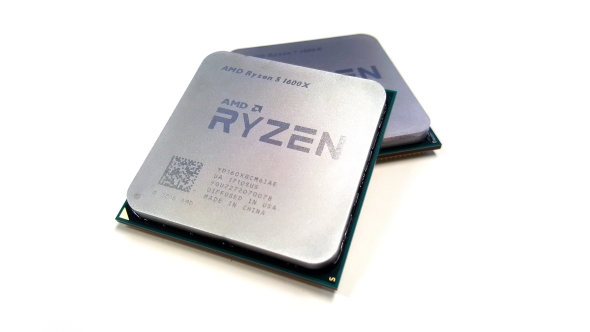
This is where the biggest battles are going to be fought, and where 2018 is going to kick right off. CES 2018 is likely to see the forces of AMD’s and Intel’s processor divisions getting tooled up, Anchorman-style, and having a pitched battle right there on the Strip. There’ll be blood in the Fountains of Bellagio this January…
For a start AMD are surely going to start the year talking about both their Raven Ridge Ryzen APUs (hopefully in desktop as well as mobile). These represent the fruit of the union between the Ryzen CPUs and Vega GPUs, and there could be some almost RX 570-level graphics power in there somewhere too.
There will also hopefully be news about the second-gen 12nm Ryzen processors, code-named Pinnacle Ridge with rumours of an early 2018 launch now seemingly confirmed. We had heard some apocryphal rumours that AMD would be managing to squeeze a 12 core chip into their Ryzen 2 range, but given the physics-defying design that would be required in order to get another quad-core CCX into the cramped CPU package, that’s pretty much guaranteed to be so much bunkum, hokum, and/or tommyrot.
2018 CPUs
Intel Coffee Lake refresh and the 9th Gen Core
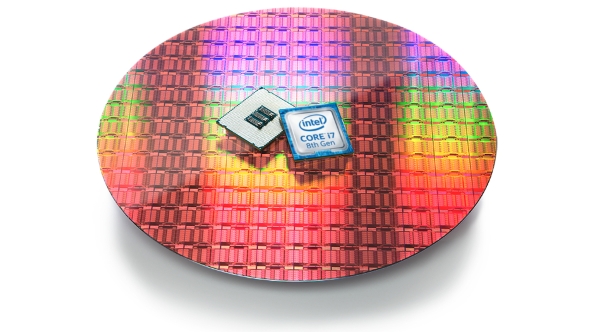
In response the blue team must surely be ready to bring the full might of the Intel Coffee Lake range to bear upon AMD. We’ve had a smattering of chips given the the most pulpy of paper launches, with the Core i7 8700K, i5 8600K and i5 8400 being rather tasty six-core offerings that you could barely find for sale, at least for a reasonable price.
A host of new refreshed 8th Gen Coffee Lake processor names have appeared in some AIDA64 release notes. There are nine new names in total; a single Core i7, four i5s, and four i3 chips. These are likely to bolster the initial CPU release with different clockspeeds and price points, and I expect them to be announced right around CES in January.
In conjunction with the new CPUs Intel must surely be ready to release the rest of the Coffee Lake chipsets too. We’ve so far only had the Z370 chipset, so we’re owed the cheaper H370 and B360 boards at least.
We’ve also heard about some 9th Gen Core chip names too, but they’re going to be coming well after CES, likely towards the end of 2018. But they do offer the tantalising prospect of Intel simplifying the core- and thread-count of their new processors in the same vein as AMD’s Ryzen 7, 5, and 3 ranges. We would then see a Core i7 with eight cores and 16 threads, the Core i5 sitting on six cores and 12 threads, and the Core i3 parts having four cores and eight threads.
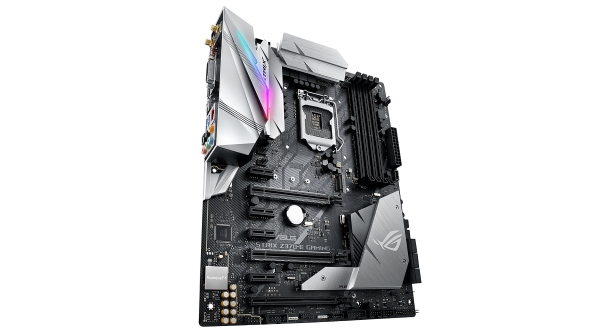
Though they could also pull some Core i9 shenanigans which would see the touted eight-core Intel CPUs sitting above the Core i7, and the HyperThreading confusion carrying on below them.
We’re pretty sure the Z390 motherboard update is due in the second half of 2018, so that would be a good combo launch with the 9th Gen. It might just be for the octacore release, however.
Like this latest Intel generation we expect the 9th Gen of late 2018 to be another mixed generation. We’re definitely still going to be holding onto some 14nm silicon, probably in Coffee Lake architectural form, but there’s is a chance some 10nm Cannon Lake or Ice Lake architecture could get an outing.
We may also see the launch of that unholy Intel/AMD hybrid chip, matching Intel’s Core architecture with AMD’s Vega GPU design. To start with, that’s just going to be a mobile part that appears sometime in 2018, but we expect some enterprising desktop sort to jam it into a non-notebook chassis – a Gigabyte Brix or Zotac ZBox perhaps.
The second half of 2018 will also see yet another Lake launched out of the Intel codename generator. Cascade Lake is set to arrive with an expectant shrug and a refreshed 14nm+++++++++++++++++++++++++++++++++++++++++++++++++++
+++++++++++++++++++++++++++++++++++++++++++++++++++++++++++++++
design which is almost exactly like Skylake-X.
2018 Graphics cards
Gaming Nvidia Volta tech with or without HBM
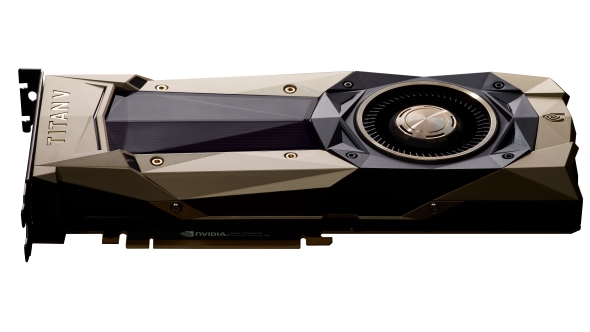
If the CPU is the brain of your gaming PC the graphics card is the heart. Or retina. Or the bit of the brain which interprets all the weird electrical reactions filtering down the optic nerve. Whatever… the GPU is the other vital part of the gaming PC puzzle.
And 2018 is surely going to be a big year for Nvidia. They managed to release the best graphics cards of last year, with the GTX 1080 Ti becoming the first genuine 4K gaming GPU. But that aside it was a case of resting on their Pascal laurels to top AMD’s finest.
But we will surely see Nvidia’s Volta finally trickling down into the world of GeForce graphics cards. In a bizarre move Nvidia released the Titan V, a $3,000 Volta-based PCIe graphics card, just before Christmas. It was bizarre because it arrived before we’d seen any professional-level Volta Quadro cards, or the desktop gaming variants, both of which traditionally appear before the Titan versions.
That does, however, stoke the rumour-fire a little more, with some suggesting the big-V will be held back for only the pro or enthusiast GPUs, with the gaming cards being formed from a new Nvidia Ampere GPU generation.
Personally, I reckon we’ll still see some Volta-based gaming chips, shorn of their HBM2 and arriving in our desktops sometime in March. The confluence of March’s GDC and Nvidia GPU Tech Conference seems almost too convenient not to be relevant.
2018 Graphics cards
AMD has another go at the Vega GPU
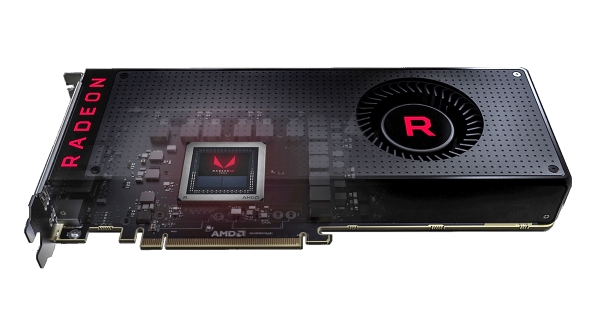
Just like Ryzen, the AMD Vega GPUs are getting a 2018 refresh. Given that we only had a pair of middling Radeon cards making up the Vega generation in gaming form, that will be rather welcome. 2018’s Vega cards – which we’ll hopefully hear some news about at CES – will similarly be built using the updated 12nm production process.
That ought to help with the thermal loads, and their desperate need to have the highest clockspeeds in order to deliver the level of performance expected of them.
It’s also possible that a more fleshed-out range of Vega graphics cards could include some without the burden of the expensive, tough-to-manufacture, HBM2 VRAM. An AMD engineer let slip they’ve been creating a GDDR6 memory controller and we can only hope that will make for some affordable, powerful Vegas arriving in 2018.
Or maybe we’ll just get a 12nm refresh of Polaris spawning the Radeon 600-series. That would be depressing, but not wholly unsurprising…
2018 Graphics cards
Intel… the third way?
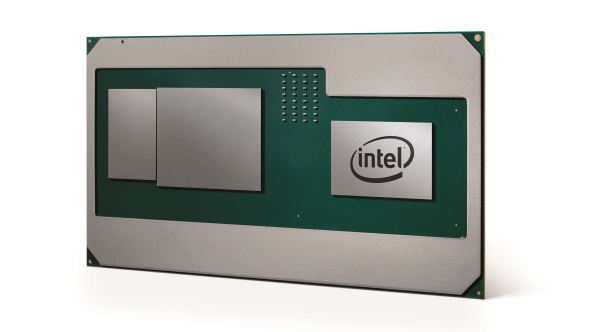
Yes, don’t forget we’ve got a third player in the discrete graphics card market. Well, potentially a third player.
Since Raja Koduri, AMD’s graphics guru, jumped ship back at the tail-end of 2017 we’ve been waiting to hear exactly what he’s going to be doing with Intel’s burgeoning graphics division. When he first announced the move Intel were full of promise that they were going to produce “high-end discrete graphics solutions for a broad range of computing segments.” Gaming is a computing segment, and a pretty broad one at that.
He’s been put in charge of their efforts to bring genuine GPU compute power into the Intel arsenal and, arguably more importantly, give them some access to that sweet, sweet AI dollar.
But, given that he only started in December, it’s probably a bit much to expect Raja to deliver a new, powerful Intel graphics card in 2018. Fingers crossed we get to hear a little bit about what he’s up to and whether we will be getting all they’ve promised.
2018 Monitors
It’s all going HDR again… probably
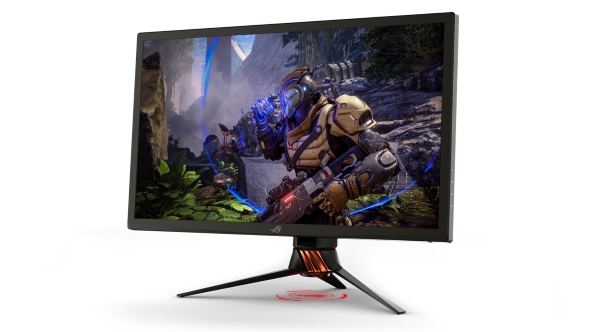
One thing that was conspicuous by its absence throughout 2017 was HDR in our monitors. That’s surely set to change in 2018, though we’ll be taking everything we see at CES 2018 on that front with a huge chunk of salt-lick. HDR was being heralded as the next big thing in PC panels at CES 2017, and yet nothing has happened since.
We’ve had HDR in TVs, and in ever-increasing numbers, for years now. But on our monitors there is precious little evidence of the brightly and broadly lit vistas of HDR in PC gaming. Luckily there are very few games that take advantage of it. Maybe I could be convinced to replay Mass Effect Andromeda and Hitman once the all-important HDR-capable monitors finally arrive.
We’ve got an actual HDR standard now and everything.
So CES 2018 is likely to be jam-packed with more HDR screenery than ever before, though hopefully with a little more realism around its eventual release than last year. The panels should at least be on the way now, AOC told us back in the summer that screen-maker AU Optronics wouldn’t be going into full production of their HDR panels until December of 2017 at the earliest.
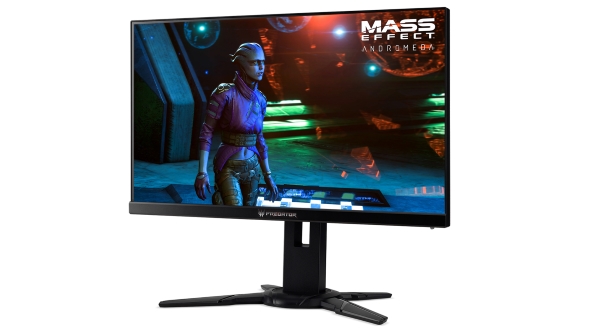
They’re the panels being used by Acer, Asus, and AOC for their HDR screens, so it looks like 2018 was always going to be a better bet for full HDR gaming monitors anyway. But hopefully it should mean the daffodils will be accompanied by a bumper crop of HDR screens in the springtime.
Who knows, we might even get a bunch of OLED gaming monitors tipping up sometime in 2018 too. But then Samsung are working on another OLED rivalling technology, Micro LED. It’s meant to have better contrast, faster response times, and better energy efficiency than traditional LEDs… which is kinda OLED’s thing.
Still, both OLED and Micro LED will likely remain steadfastly TV tech for the foreseeable, but here’s hoping there’s a PC gamer on staff at Samsung TV HQ…
And then there’s Razer’s Project Valerie. Now, we know that it’s ostensibly a gaming laptop, but considering it’s a gaming laptop with three screens – two that fold out from the side – it’s proportionally more monitor than notebook. Project Valerie was only a prototype from CES last year, but maybe we’ll see a little more of it this year. Though one of the prototypes was stolen from the show so it would be understandable if it was a little more camera shy this year.
2018 peripherals, memory, and the rest…
Wireless wonders, Xpoint, and peopleless people carriers
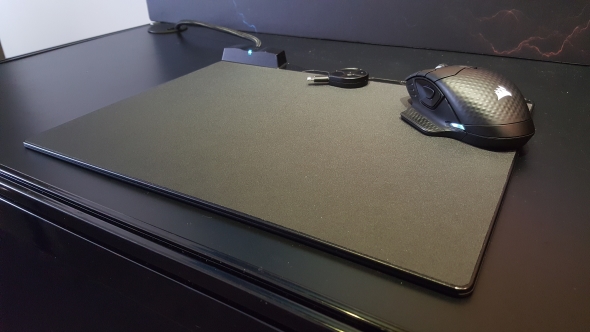
With the launch of their Lightspeed wireless connection and wireless charging technology Logitech have seemingly taken a stranglehold over the PC peripherals market. Their long-lived, accurate mice and keyboards are as solid as they come. But Corsair aren’t going to let them sit too comfortably for long, and they’re looking to hit back with their own wireless kit this year.
We saw Corsair’s Qi wireless charging Concept Zeus mouse at their Computex suite in the summer, but they’ve announced a whole event around wireless gaming at CES this year, so we doubt that a wireless rodent is the extent of their plans for worldwide wireless domination.
The storage world could get shaken up a little throughout 2018 with the hope that memory manufacturing might get a little more reliable over the next 12 months, potentially making SSDs a little cheaper than the pricing they’re currently stagnating around. Samsung are also set to follow Intel and Micron in engineering a new type of memory. Their Z-NAND memory is set to go head-to-head with the 3D XPoint memory of the Intel/Micron partnership, and promises ultra-low latency under sustained workloads, and super high-speed throughput at levels over 3GB/s.
And, while we’re talking memory, we might see some noises at CES, or later in the year, about the finalised specifications for DDR5. Though they might not be finalised before 2019. And modules won’t hit the market before 2020. Or even longer…
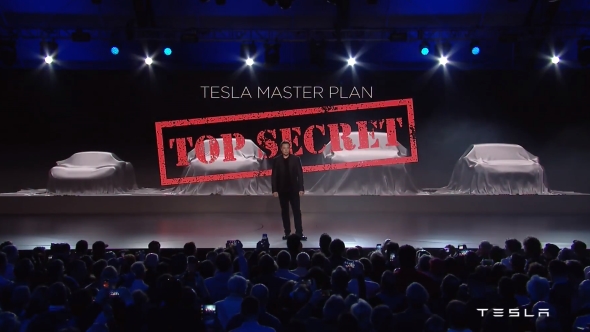
One thing we expect to hear a lot of noise about at CES this year, and throughout the rest of 2018 too, is artificial intelligence. The whole machine learning, inference, AI shizzle is one of the biggest growth markets in hardware and the big hitters are all trying to get in on the action. Intel picked up Raja Koduri to bring them some parallel processing power, and Nvidia are still going big with Volta and AI.
They also love their cars, but it seems Tesla have tied their wagon to the AMD horse. Yes, apparently Tesla and AMD are building the new Knight Rider and creating driverless cars for the masses. Well, the masses with money anyways.
But that’s by no means the lot. There will be a host of other new technologies filtering out of the Nevada desert this January, and we’ll be there seeing what we can see and prodding what we can prod.
